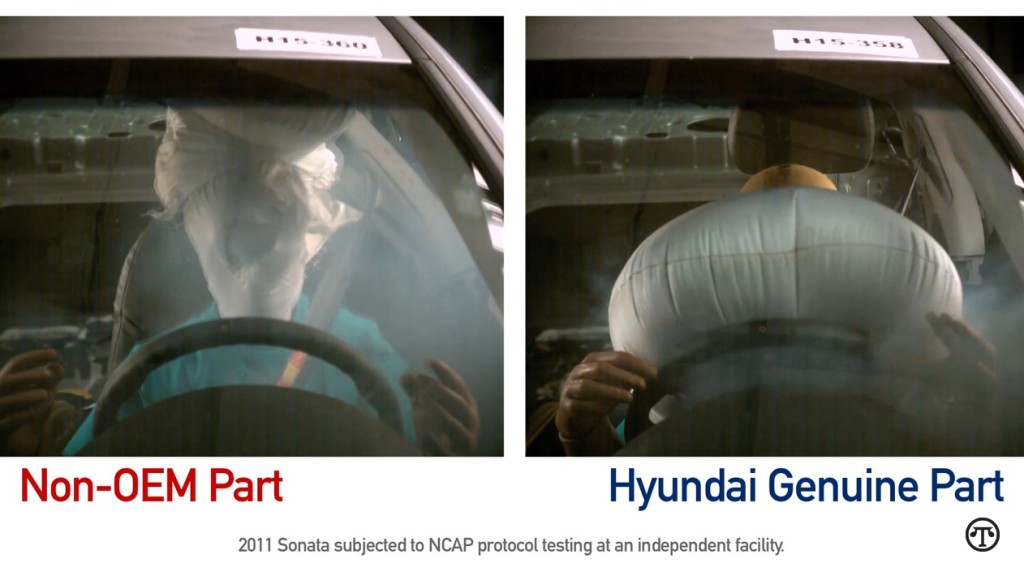
(NAPSI)—According to the U.S. National Highway Traffic Safety Administration (NHTSA), some 10 million vehicles are involved in accidents every year.
If yours is ever one of them and needs repairs, it’s important to remember that to keep it on the road to safety and saving, you need to avoid counterfeit, aftermarket, salvaged and recycled auto parts.
The Problem
Some people think, or are told by their insurance company, that they can save money by visiting independent repair shops that are not recognized by the automakers for collision repairs. Unfortunately, these shops may offer copies of original parts or recycled components from other collision-damaged vehicles. Often, these parts are unsafe for long-term use. Counterfeit and recycled crash parts also affect the vehicle’s appearance and decrease its resale value. Car manufacturers such as Hyundai encourage the use of OEM (original equipment manufacturer) parts on all vehicle repairs because such parts are designed and manufactured to meet Hyundai’s engineering specifications. Before you have your car fixed, it can be wise to find out whether the repair facility uses original equipment parts.
Hyundai Genuine Parts are manufactured to exact engineering specifications for a precise fit without modifications, ensuring quick and proper installation. They are also tested to ensure they meet the U.S. government’s collision safety and crash protection standards. These parts have high reliability because they are made from high-quality materials.
The NHTSA says this is especially important when you need a new air bag.
Expert Advice
To help, Hyundai has created a consumer awareness campaign, highlighting the differences between non-Hyundai and Hyundai Genuine Parts.
“Counterfeit parts have been a growing problem over the last 30 years,” said Frank Ferrara, executive vice president, customer satisfaction, Hyundai Motor America. “Customers would see short-term savings after their vehicle was repaired, not even aware that non-Hyundai parts were used to bring these repair costs down. Short-term savings can have adverse long-term implications on the vehicle and passengers, which ultimately ends up costing more. Consumer awareness is essential to addressing this issue and Hyundai is willing to do its part. The more people understand the dangers behind using non-Hyundai components and see the benefits of purchasing original parts, the less likely they are to suffer severe consequences and lose value on their car.”
After the repair, it’s a good idea to take delivery of your vehicle during the day and inspect it in daylight. Look for consistent gaps between panels and make sure the doors, hood and trunk open properly.
What Else You Can Do
Even before you get your car repaired, remember to do six things immediately after any vehicle accident:
- Check everyone for injuries; call an ambulance when in doubt.
- If you can, move all cars involved to a safe place out of traffic.
- Turn on your hazard lights.
- Inform the police even if the accident is minor.
- Notify your insurance agent.
- Take photos if you can and make notes, including specific damages to all vehicles involved, witness information and so on.
Learn More
For further facts and stats, visit www.HyundaiUSA.com/ConsumerAwareness. You can also watch the video titled “Don’t Gamble with Counterfeit Parts” on the HyundaiUSA YouTube channel.
